Designing Scalable EIGRP Designs
This section focuses on designing advanced routing solutions using Enhanced Interior Gateway Routing Protocol (EIGRP). It describes how to scale EIGRP designs and how to use multiple EIGRP autonomous systems in a large network.
Scaling EIGRP Designs
EIGRP is tolerant of arbitrary topologies for small and medium networks. This is both a strength and a weakness. It is useful to be able to deploy EIGRP without restructuring the network. As the scale of the network increases, however, the risk of instability or long convergence times becomes greater. For example, if a network has reached the point where it includes 500 routers, EIGRP may stop working well without a structured hierarchy. As the size of the network increases, more stringent design is needed for EIGRP to work well.
To scale EIGRP, it is a good idea to use a structured hierarchical topology with route summarization.
One of the biggest stability and convergence issues with EIGRP is the propagation of EIGRP queries. When EIGRP does not have a feasible successor, it sends queries to its neighbors. The query tells the neighbor, "I do not have a route to this destination any more; do not route through me. Let me know if you hear of a viable alternative route." The router has to wait for replies to all the queries it sends. Queries can flood through many routers in a portion of the network and increase convergence time. Summarization points and filtered routes limit EIGRP query propagation and minimize convergence time.
Feasible distance is the best metric along a path to a destination network, including the metric to the neighbor advertising that path. Reported distance is the total metric along a path to a destination network as advertised by an upstream neighbor. A feasible successor is a path whose reported distance is less than the feasible distance (current best path).
EIGRP Fast Convergence
Customers have been using EIGRP to achieve subsecond convergence for years. Lab testing by Cisco has shown that the key factor for EIGRP convergence is the presence or absence of a feasible successor. When there is no feasible successor, EIGRP uses queries to EIGRP peers and has to wait for responses. This slows convergence.
Proper network design is required for EIGRP to achieve fast convergence. Summarization helps limit the scope of EIGRP queries, indirectly speeding convergence. Summarization also shrinks the number of entries in the routing table, which speeds up various CPU operations. The effect of CPU operation on convergence is much less significant than the presence or absence of a feasible successor. A recommended way to ensure that a feasible successor is present is to use equal-cost routing.
EIGRP metrics can be tuned using the delay parameter. However, adjusting the delay on links consistently and tuning variance are next to impossible to do well at any scale.
In general, it is unwise to have a large number of EIGRP peers. Under worst-case conditions, router CPU or other limiting factors might delay routing protocol convergence. A somewhat conservative design is best to avoid nasty surprises.
EIGRP Fast-Convergence Metrics
This section discusses EIGRP fast-convergence metrics. Cisco tested convergence of various routing protocols in the lab, as shown in Figure 3-7.
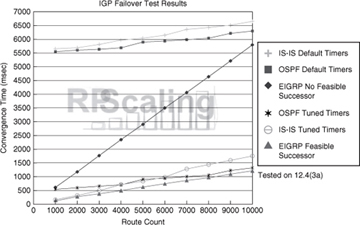
Figure 3-7 EIGRP Fast Convergence
EIGRP convergence time increases as more routes need to be processed. However, there is a much bigger impact for networks without EIGRP feasible successors than for networks with no feasible successors.
With a feasible successor present, EIGRP converges in times ranging from about 1/10 second for 1000 routes to about 1.2 seconds for 10,000 routes. Without the feasible successor, convergence times increased to 1/2 to 1 second for 1000 routes and to about 6 seconds for 10,000 routes.
Subsecond timers are not available for EIGRP. One reason is that the hello timer is not the most significant factor in EIGRP convergence time. Another is that experimentation suggests that setting the EIGRP timer below two seconds can lead to instability. The recommended EIGRP minimum timer settings are two seconds for hellos and six seconds for the dead timer. Subsecond settings are not an option.
Scaling EIGRP with Multiple Autonomous Systems
Implementing multiple EIGRP autonomous systems is sometimes used as a scaling technique. The usual rationale is to reduce the volume of EIGRP queries by limiting them to one EIGRP autonomous system. However, there can be issues with multiple EIGRP autonomous systems, as shown in Figure 3-8.
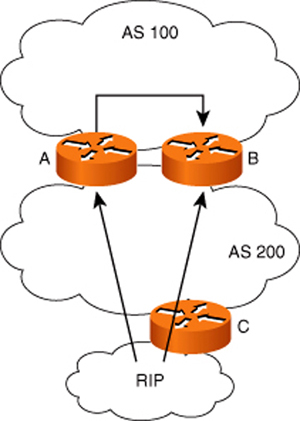
Figure 3-8 Scaling EIGRP with Multiple Autonomous Systems
One potential issue is with the external route redistribution. In Figure 3-8, a route is redistributed from RIP into autonomous system 200. Router A redistributes it into autonomous system 100. Router B hears about the route prefix in advertisements from both autonomous system 200 and autonomous system 100. The AD is the same because the route is external to both autonomous systems.
The route that is installed into the EIGRP topology database first gets placed into the routing table.
Example: External Route Redistribution Issue
If router B selects the route via autonomous system 100, it then routes to the RIP autonomous system indirectly, rather than directly via autonomous system 200, as illustrated in Figure 3-9.
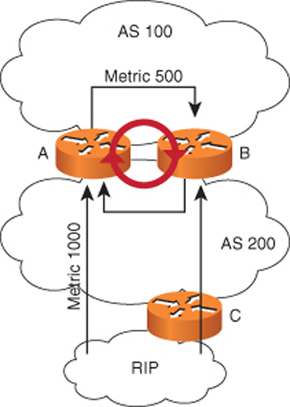
Figure 3-9 Example: External Route Redistribution Issue
Router B also advertises the route via autonomous system 100 back into autonomous system 200. Suppose B has a lower redistribution metric than router C does. If that is the case, A prefers the route learned from B over the route learned from C. In this case, A forwards traffic for this route to B in autonomous system 200, and B forwards traffic back to A in autonomous system 100. This is a routing loop!
If two EIGRP processes run and two equal paths are learned, one by each EIGRP process, both routes do not get installed. The router installs the route that was learned through the EIGRP process with the lower autonomous system number. In Cisco IOS Software Releases earlier than 12.2(7)T, the router installed the path with the latest time stamp received from either of the EIGRP processes. The change in behavior is tracked by Cisco bug ID CSCdm47037.
The same sort of behavior may be seen with redistribution between two routing protocols, especially for routes learned from the protocol with the lower AD.
Filtering EIGRP Redistribution with Route Tags
Outbound route tags can be used to filter redistribution and support EIGRP scaling with multiple EIGRP autonomous systems, as shown in Figure 3-10.
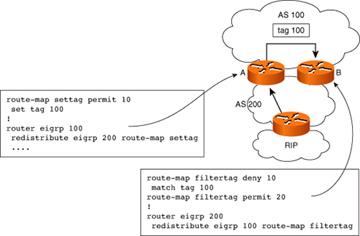
Figure 3-10 Filtering EIGRP Redistribution with Route Tags
External routes can be configured to carry administrative tags. When the external route is redistributed into autonomous system 100 at router A or B, it can be tagged. This tag can then be used to filter the redistribution of the route back into autonomous system 200. This filtering blocks the formation of the loop, because router A will no longer receive the redistributed routes from router B through autonomous system 200.
In the configuration snippets, when routers A and B redistribute autonomous system 200 routes into autonomous system 100, they tag the routes with tag 100. Any routes tagged with tag 100 can then be prevented from being redistributed back into autonomous system 200. This successfully prevents a routing loop from forming.
Filtering EIGRP Routing Updates with Inbound Route Tags
You can filter EIGRP routing updates with inbound route tags to support scaling with multiple EIGRP autonomous systems, as shown in Figure 3-11.
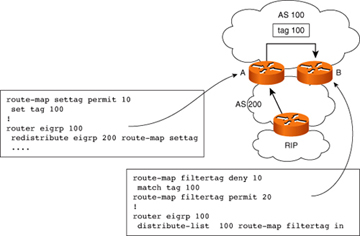
Figure 3-11 Filtering EIGRP Routing Updates with Inbound Route Tags
Filtering outbound tags in the previous example does not prevent router B from learning the routes from autonomous system 100. Router B could still perform suboptimal routing by accepting the redistributed route learned from autonomous system 100.
The solution is to use inbound route tag filtering. This technique prevents routers from learning such routes, in which case they also will not be redistributed or advertised outbound. The Cisco bug fix CSCdt43016 provides support for incoming route filtering based on route maps. It allows for filtering routes based on any route map condition before acceptance into the local routing protocol database. This fix works for EIGRP and OSPF, starting with the Cisco IOS Software Releases 12.2T and 12.0S.
When routes are filtered to prevent router B from learning them, you prevent suboptimal routing by router B. The syntax shifts from using a route map with a redistribute command to using a route map with an inbound distribute-list command.
Example: Queries with Multiple EIGRP Autonomous Systems
This example looks at the query behavior with multiple EIGRP autonomous systems. This is illustrated in Figure 3-12.
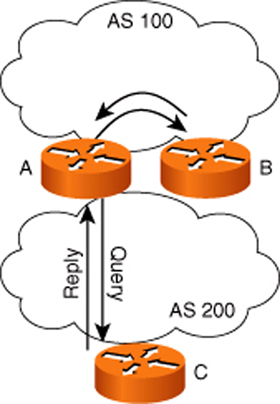
Figure 3-12 Example: Queries with Multiple EIGRP Autonomous Systems
If router C sends an EIGRP query to router A, router A needs to query its neighbors. Router A sends a reply to router C, because it has no other neighbors in autonomous system 200. However, router A must also query all of its autonomous system 100 neighbors for the missing route. These routers may have to query their neighbors.
In this example, the query from router C is answered promptly by router A, but router A still needs to wait for the response to its query. Having multiple autonomous systems does not stop queries; it just delays them on the way.
What really stops a query is general scaling methods using summarization, distribution lists, and stubs.
Reasons for Multiple EIGRP Autonomous Systems
There are several valid reasons for having multiple EIGRP autonomous systems, including the following:
- Migration strategy after a merger or acquisition: Although this is not a permanent solution, multiple autonomous systems are appropriate for merging two networks over time.
- Different groups administer the different EIGRP autonomous systems: This scenario adds complexity to the network design, but might be used for different domains of trust or administrative control.
- Organizations with very large networks may use multiple EIGRP autonomous systems as a way to divide their networks: Generally, this type of design approach uses summary routes at autonomous system boundaries to contain summary address blocks of prefixes in very large networks and to address the EIGRP query propagation issue.
These reasons for using multiple EIGRP autonomous systems can be appropriate, but pay careful attention to limiting queries.